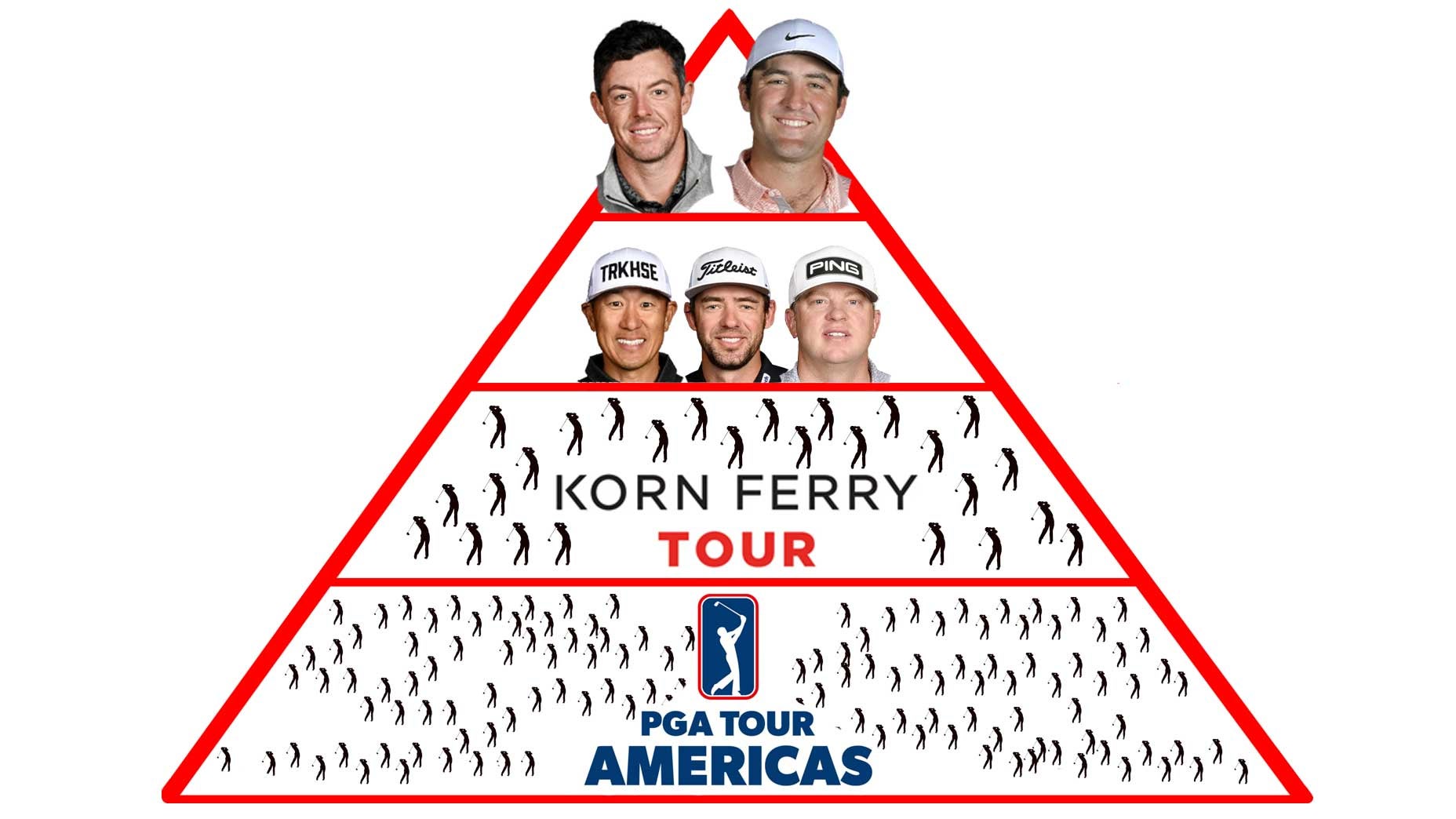Men’s golf has always been a food chain. Now it’s a better one

The PGA Tour is finally defining its food chain better than before, but not everyone is happy about it.
Sean Zak
It always feels a bit gruesome when Planet Earth spends five minutes explaining in exquisite 4K that, yes, the great white shark makes sandwiches out of seals.
Those cute, chirpy seals, splashing around. We tend to feel for them — maybe because pop culture has told humans to fear the apex predator, too — but perhaps the documentaries hold on these moments in excruciating detail to really drive home the point. This is what the food chain looks like. It might get messy in reality but on paper it is neat and orderly. The predators are higher up. The consumers are next down the list. The producers even lower. It is what it is.
We can’t look away, though. For one, the primitivity of nature is fascinating, but also because through these images the natural order of life makes most sense. It’s only when the seals band together in numbers — as seen on Planet Earth III! — that the system is turned on its side and suddenly feels out of order. Kinda like pro golf right now.
The professional corner of the sport has long been messy in this way, where the seals aren’t threatened by the sharks. And it’s gotten messier in recent years, largely due to the, uh, new fisherman poaching the ecosystem. But also because the PGA Tour is finally defining its food chain better than before, and the seals are upset. (See: Lanto Griffin, Nate Lashley, and the 19 others who signed on to join The Great FedEx Cup Points Fight.)
Compared to other sports, golf has long been one of the messiest, so this is nothing new. Its structures are stout in their history but clearly very breakable. You couldn’t draw the shape of the PGA Tour in a clean way like you can the other pro sports — their two leagues of eight four-team divisions, everyone fighting for the same exact thing. Even the relatively messy European football works in a straightforward way: Finish in the top three, you’ll move up. Finish in the bottom three, you’ll move down. They’re called tables; a clear shape, easy to define. But what shape is pro golf? It’s often just an amorphous ranking, fat in some spots and skinny in others.
In the most important way, though, pro golf has just been a bunch of stacked rectangles, with the PGA Tour up top. PGA Tour Canada was on the same, lower level as PGA Tour Latinoamerica. In between was the Korn Ferry Tour. For decades it was largely meritocratic. Excel within one area and you’ll move up. Only, once you joined the 220 or so at the top, there wasn’t anywhere higher to go.
The old PGA Tour maintained a relative homogenization of status up there. With roughly 130-150 spots in most tournaments, it wasn’t that special to be No. 45 compared to being No. 95. Shoot — being No. 125 was not-so-secretly the key to a clear mind and guaranteed schedule. And even being No. 145 locked in a conditional status that was quite good. A lot of the time, No. 145 could still earn a Thursday tee time, starting with the same score on the same course as Nos. 1 and 9 and 32 and 58. It was meritocracy, but limited in scope to those four-day bursts of competition. It was good being a seal. Until August 2022, when the sharks met in Delaware and decided they needed to change things.

The future PGA Tour, though a bit murky at the moment, will have a different shape. Not drastically different, just with a triangle on top, more like the food pyramids from middle school textbooks that taught us the natural order of ecosystems. That triangle is the Top 50, where the Rory McIlroys look down on the Nate Lashleys. That triangle will have the biggest purses, the best competition and the best chance to, frankly, survive at the elite-elite level.
No. 45 will play a schedule that totals more than $300 million in purses while No. 95’s schedule of purses might reach just $180 million. No. 45 is bound to earn more FedEx Cup points from his 5th-place finish than No. 95 will from his own 5th-place finish. As evidenced by the squirming we’ve seen from the second rung of the pyramid, the system is not going to feel perfectly fair. At least not at first. But it will make absolutely clear who is a shark and who is a seal, and just how much one can live without the other. Like Planet Earth, that will keep us from looking away.
The author welcomes your comments, concerns, and any other notes at sean.zak@golf.com.










